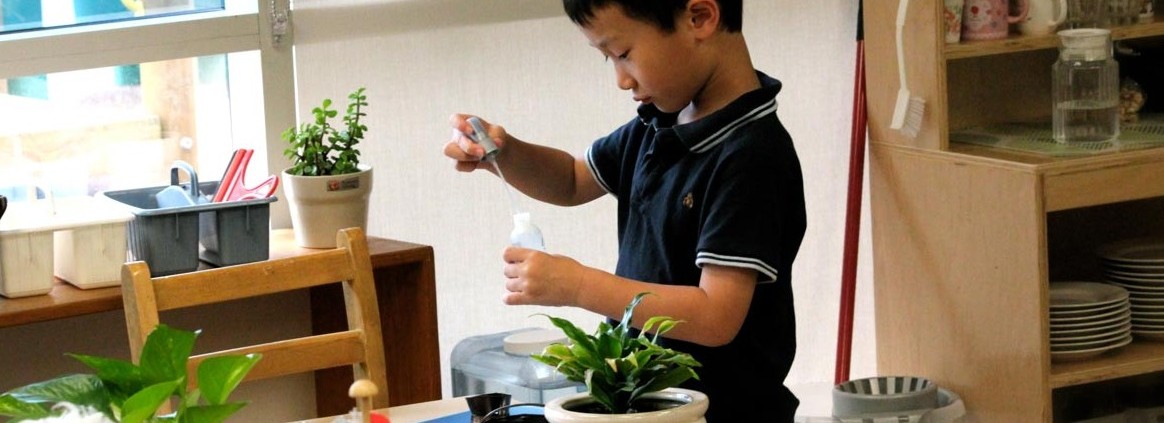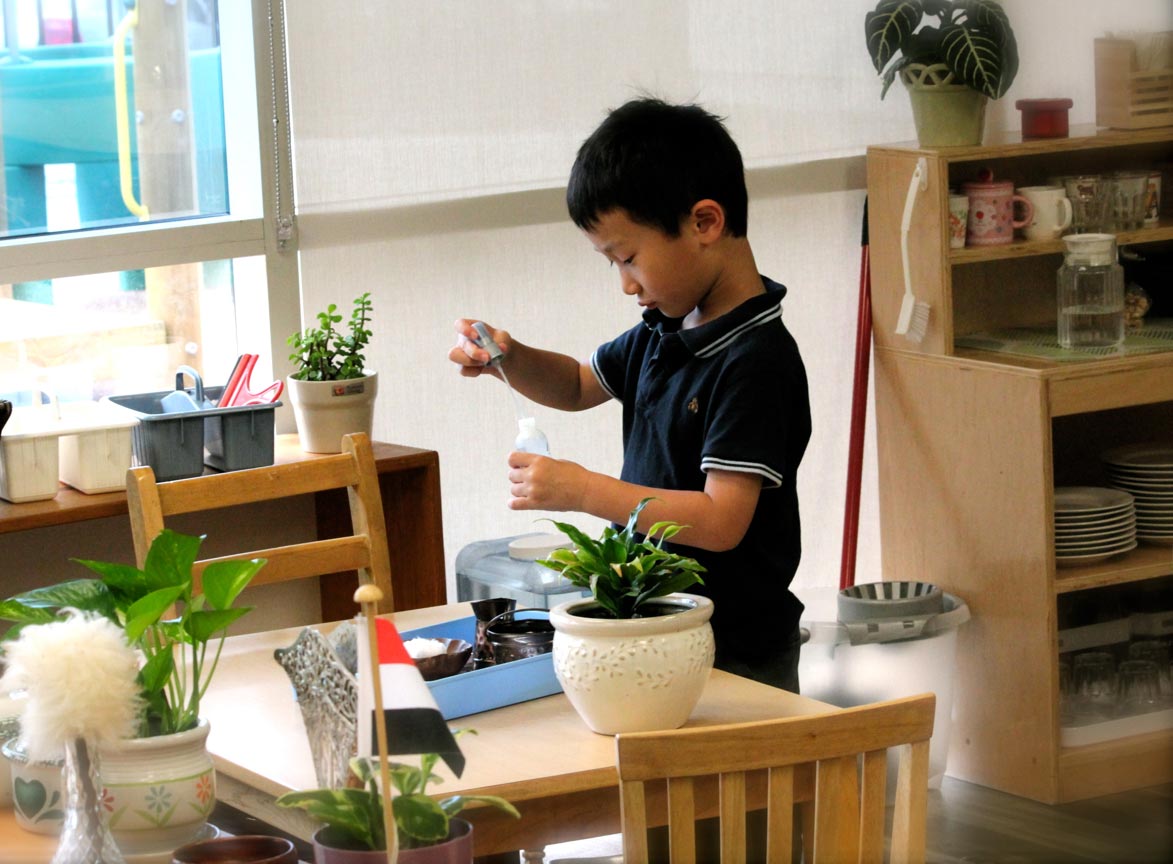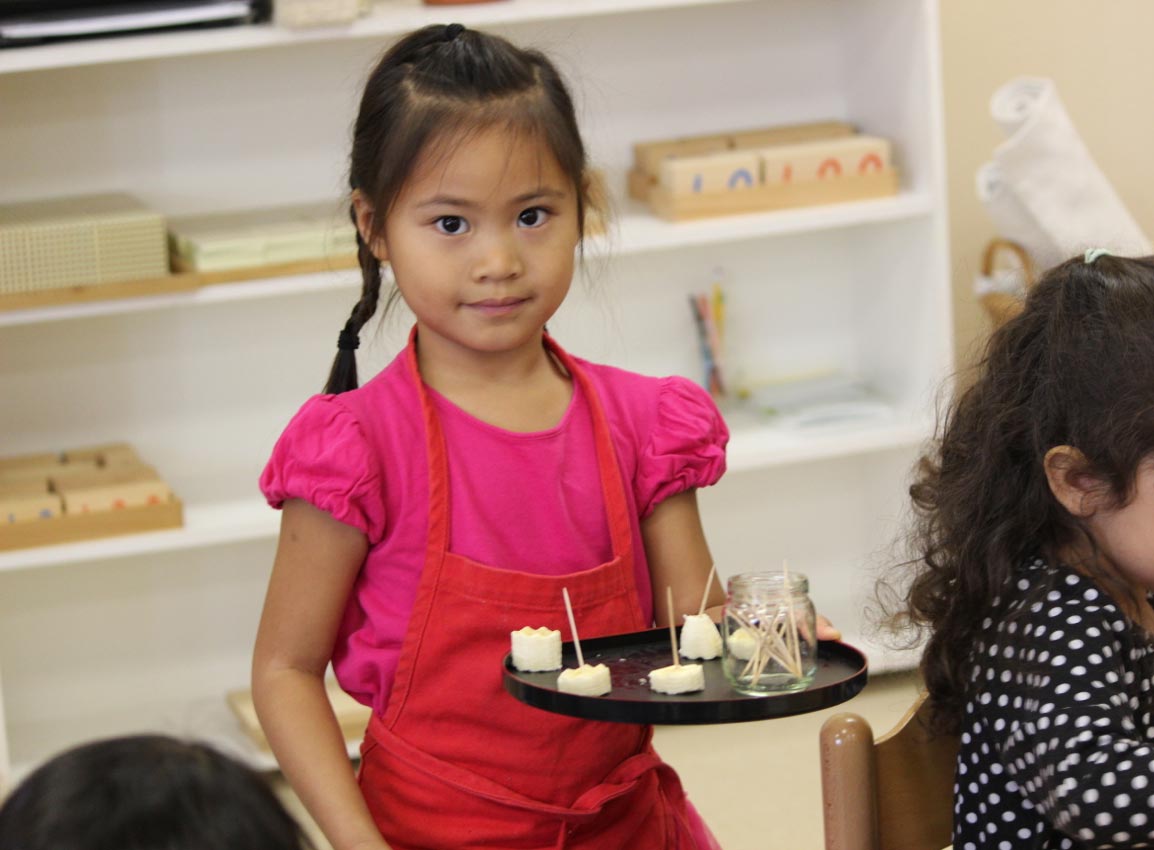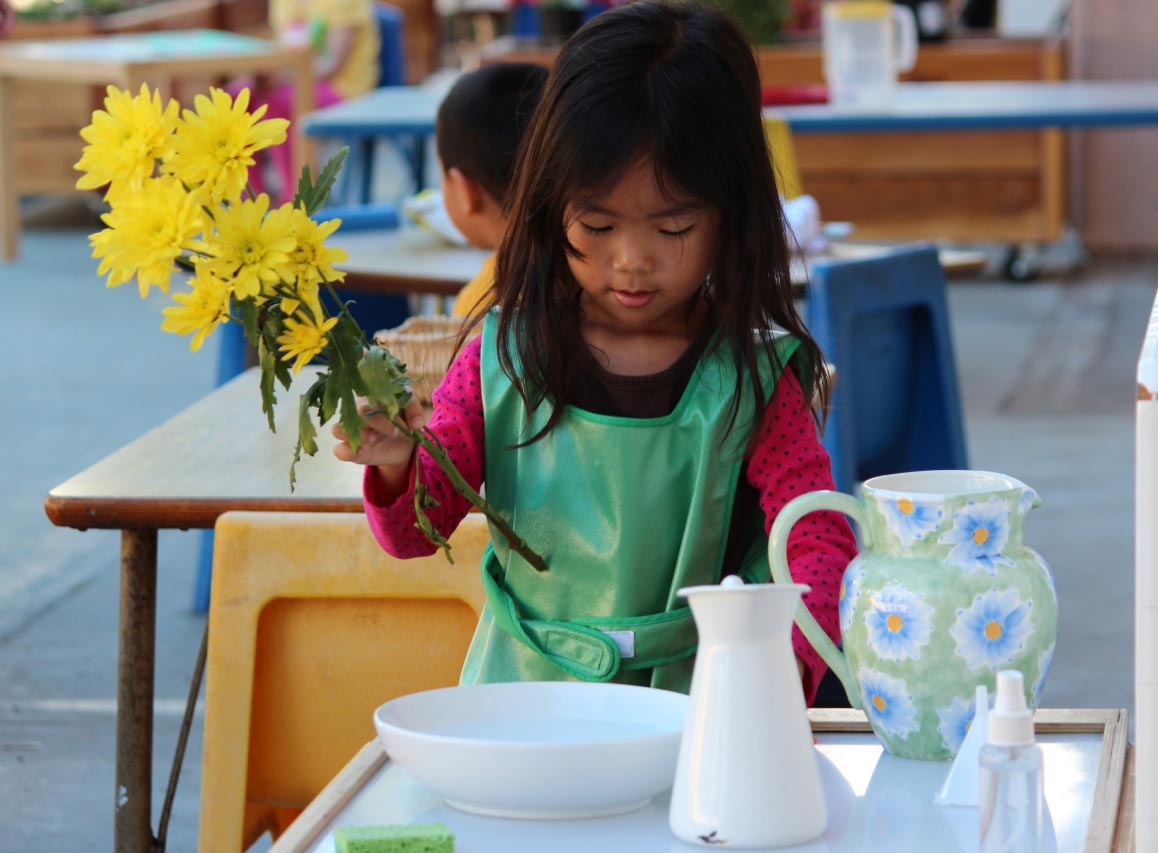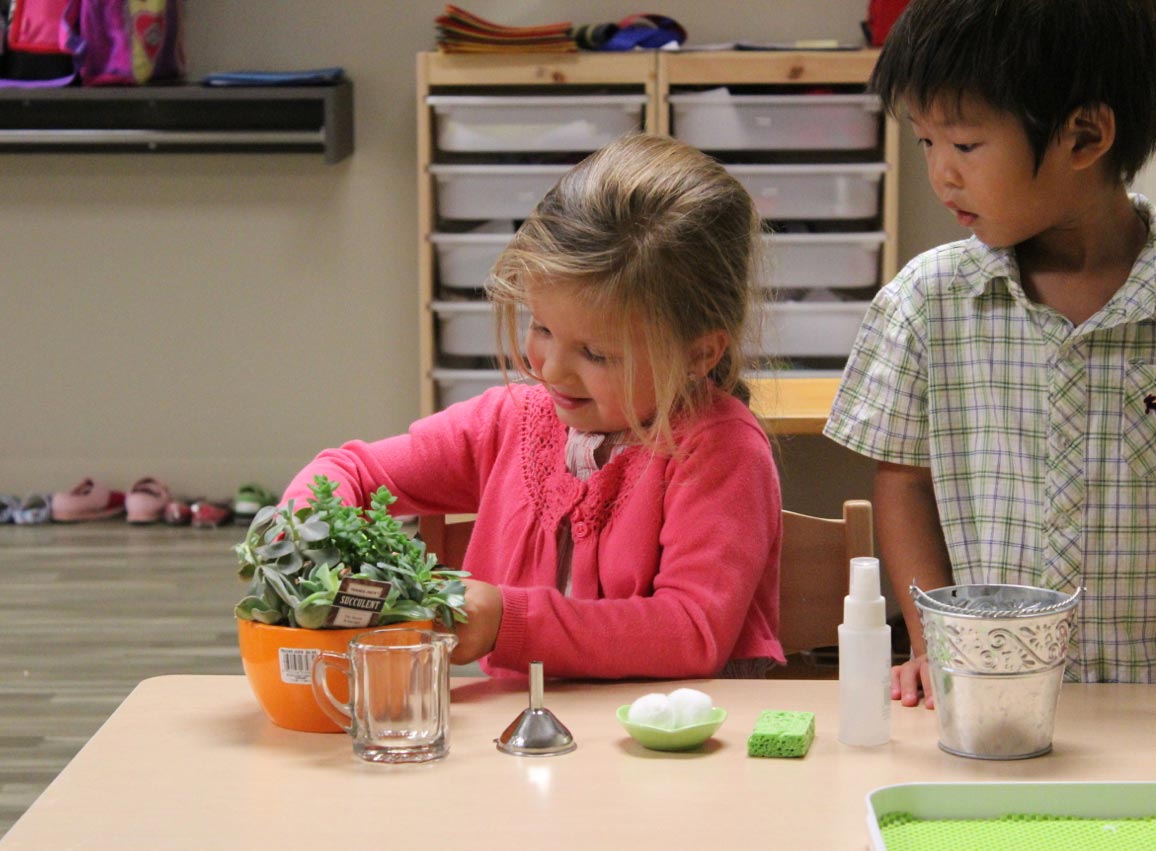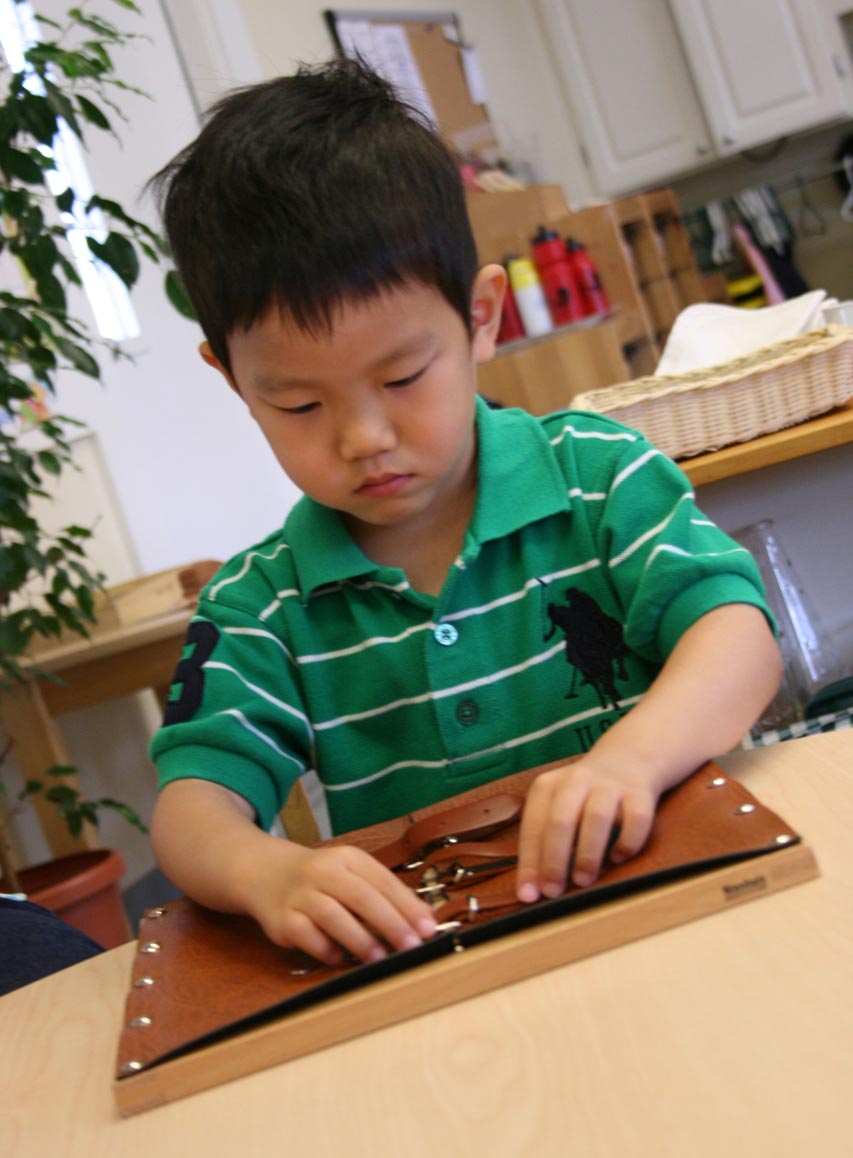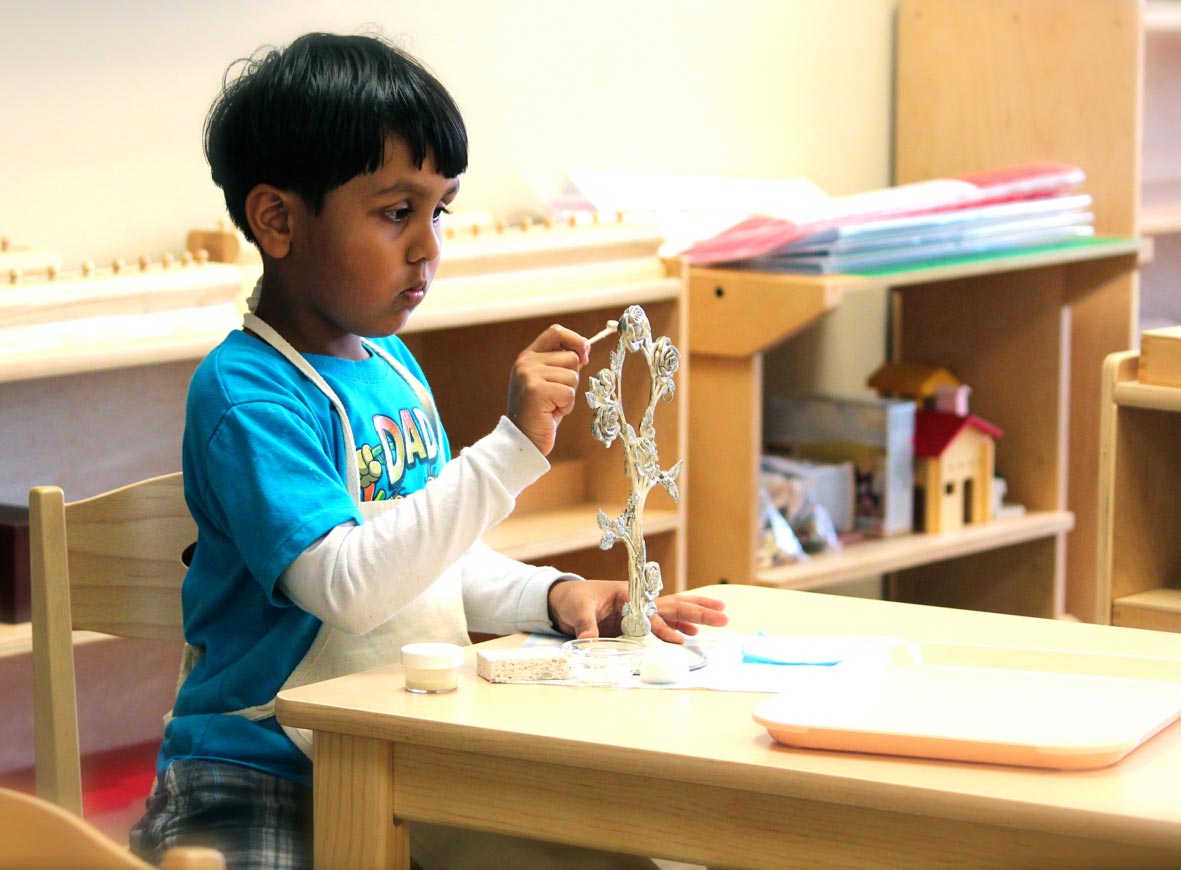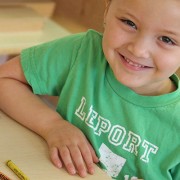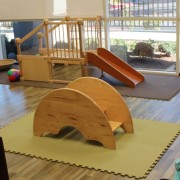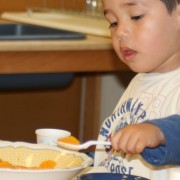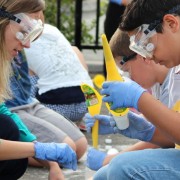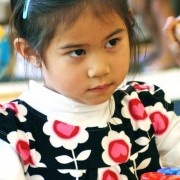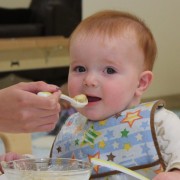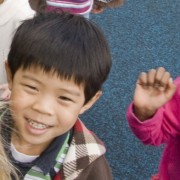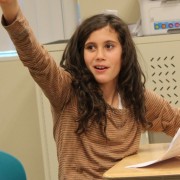The Dual Purpose of Montessori Preschool Practical Life Activities
The first essential for the child’s development is concentration. The child who concentrates is immensely happy. Dr. Maria Montessori
Students new to Montessori preschool spend much time in the Practical Life area of the classroom, where shelves are filled with activities for dressing, food preparation, sweeping, polishing, and so on. In a variety of ways, Practical Life activities provide the preschool child with skills for self-care, caring for the classroom environment, and all-around independence.
This independence is a critical aspect of a Montessori preschool education. As Dr. Montessori wrote:
If teaching is to be effective with young children, it must assist them to advance on the way to independence. It must initiate them into those kinds of activities which they can perform themselves and which keep them from being a burden to others because of their inabilities. We must help them to learn how to walk without assistance, to run, to go up and down stairs, to pick up fallen objects, to dress and undress, to wash themselves, to express their needs in a way that is clearly understood, and to attempt to satisfy their desires through their own efforts. All this is part of an education for independence.
Dr. Maria Montessori
A 3-year-old preschooler, with proper instruction, is able to do many things for himself and can start to contribute meaningfully within the classroom or family community, too. It is in the Practical Life area of the Montessori preschool classroom that your child learns these skills – and you can help him by encouraging him to be independent and helpful at home as well:
- Preparing food. 3-year-old preschool children love to do real work they see us do. In class, they often prepare snack for friends: peeling and cutting carrots, cutting and serving bananas, preparing apple and cheese trays.
At home, your preschool child can become a true helper in the kitchen and participate in real cooking activities. Invest in some good tools, like the ones available from For Small Hands, and you’ll be rewarded as your preschooler begins to peel vegetables, measure ingredients, and clean up small messes. By a child’s 3rd year (age 5 – 6) she might be capable of taking over much of the meal prep: My 5½ year old daughter recently prepared most of a taco dinner for us, cutting tomatoes, helping sauté the chicken, putting condiments into bowls, and setting the table for the family. She even surprised me by heating the tortillas in the oven, taking the oven mitt out of a drawer before she put the baking tray into the oven. I had never taught her that—I didn’t even realize she knew where the oven mitt was stored! If you welcome your children into the kitchen while you work and narrate what you do and why, you’ll be surprised by how much they pick up, and how eager to participate they become!
- Cleaning up. Washing a table is a favorite Practical Life activity. It involves many steps and materials, and we build up to it slowly, teaching each component skill: students learn to squeeze sponges by transferring water between small containers; they learn to pour water by first pouring beans, then lentils, then rice, then water with small pitchers; they learn how to operate a faucet, making sure to turn off the water when done; they learn to put on an apron; they learn to fold a cloth; they learn to put materials away after completing their work. The table washing activity puts together all these skills: It’s amazing to see a 3½- or 4-year-old complete this rather complex, multi-step process.
At home, you can encourage your child to participate in cleanup after a meal—from bringing dishes into the kitchen, scraping food into the trash, and placing them in the dishwasher, to wiping down the table and sweeping up food crumbs from under it.
- Taking care of plants. All of our Montessori preschool classrooms have plants, and taking care of them is a great Practical Life activity. Students learn to dust leaves, cut off and dispose of dead leaves, and water the plants. They also learn how to arrange flowers to help beautify their classrooms!
Your child can enjoy similar tasks at home by selecting a few small plants at a garden store with you and then being entrusted with their care. Observe her pride and attentiveness as she thinks to water her plants and keep them healthy. And, of course, if you have a garden, by all means invest in some child-sized tools so your preschooler can help you. Planting vegetables and fruits and harvesting them is not only a great Practical Life experience, it’s a great opportunity to awaken an interest in science, too.
- Getting dressed and taking care clothes. The Dressing Frames are a set of Practical Life materials that enable children to learn how to manage common fasteners, such as zippers, buttons, snaps, belt buckles and shoelaces. Within his first year in the Montessori preschool class, your child will round out his dressing skill set. He’ll also refine other skills, such as folding cloths, sorting things by color, and placing things into their proper spots on shelves.
With these skills, your preschool child will soon be ready to take care of much of his daily clothing needs. A 3½ or 4-year-old is usually able to dress himself from head to toe—if he’s given enough time. He’s also able to place dirty clothes in a hamper, even sorting them by lights and darks, and can put folded clothes back into drawers and shelves. Older preschool children can contribute more to the family’s laundry: try teaching your 5-year-old to load the washing machine, measure pour detergent, and get the load started! She’ll also be able to fold many of her own clothes, and hang up dresses and pants on hangers in her closet.
As we wrote elsewhere, a child who feels capable because he can act in the world, without needing to rely on Mom or Dad for every little thing, is a child who is developing self-confidence. Writes psychologist Madeline Levine:“Self-esteem doesn’t contribute much to success. But success contributes mightily to self-esteem. Kids have to ‘do’ something, and do it well, to get a self-esteem boost.”
Helping the child learn to do things for himself, however important, is just one of the goals of Practical Life. Like all aspects of a Montessori preschool classroom, Practical Life has many learning objectives. Here are a few:
- To facilitate a smooth transition to school by providing familiar activities. Practical life is the part of the classroom where new students feel comfortable because they reflect similar activities to what they see at home. Peeling a banana, pouring water, cutting with scissors, and cleaning spills are all familiar activities the young child finds comfort in.
- To develop concentration. Practical Life is usually where a child first connects with a material and immerses himself fully in a chosen, repeated activity. A child who previously darted around the room, unable to pause long enough to connect with any particular material, might become fascinated with pouring water back and forth or with drying a table. In doing so he learns to focus his mind for the purpose of mastering a new skill. This is the start of a child’s attachment to the many Montessori materials, which build in complexity to help build concentration.
- To develop fine- and gross-motor skills. Practical Life tasks are excellent motor skills activities. Carrying heavy objects such as classroom chairs or buckets of water builds gross motor strength; pouring from a small pitcher or scrubbing a table increases precision of movement; peeling an egg, using a dropper, or picking up dropped beans all strengthen the three fingers needed for writing with a pencil.
- To develop problem-solving skills. Like most Montessori materials, Practical Life activities have a built-in control of error: They enable the child himself to judge whether an activity has been done satisfactorily or not (water has spilled; a button is left without a whole; the loosely rolled rug won’t stand up in the bin). With positive guidance from his teacher, the child learns to pay attention to these cues and acquires a habit of self-correction.
- To develop logical work habits. Practical Life activities progress in complexity and, in doing so, increase a child’s ability to work through a series of steps in a logical way from beginning to end. This is vital for success with more abstract language or math work later on.
While many parents are eager to see their child progress to academic lessons in the preschool classroom, we hope you’ll see the hidden value in Practical Life, and wholeheartedly support your child as he explores the many fun and educational activities found in this unique part of the Montessori Primary class.

